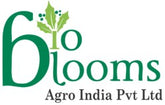Fertilizers:-
Fertilizers are used daily by farmers and families to help crops and gardens grow. Whether for a small garden of flowers and plants, or a large farm with thousands of acres of crops, a wide range of fertilizers have been developed to help different crops grow in different soil and weather conditions.
Chemical ingredients help create fertilizers that promote plant growth and are cost effective, too. Commercial and consumer fertilizers are strictly regulated by both individual states and the federal government to ensure that they are safe for the people who use them, people nearby, and the surrounding environment.
Fertilizers enhance the growth of plants. This goal is met in two ways, the traditional one being additives that provide nutrients. The second mode by which some fertilizers act is to enhance the effectiveness of the soil by modifying its water retention and aeration. This article, like many on fertilizers, emphasises the nutritional aspect.
A fertilizer (American English) or fertiliser (British English; see spelling differences) is any material of natural or synthetic origin that is applied to soil or to plant tissues to supply plant nutrients. Fertilizers may be distinct from liming materials or other non-nutrient soil amendments. Many sources of fertilizer exist, both natural and industrially produced.[1] For most modern agricultural practices, fertilization focuses on three main macro nutrients: Nitrogen (N), Phosphorus (P), and Potassium (K) with occasional addition of supplements like rock dust for micronutrients. Farmers apply these fertilizers in a variety of ways: through dry or pelletized or liquid application processes, using large agricultural equipment or hand-tool methods.
Historically fertilization came from natural or organic sources: compost, animal manure, human manure, harvested minerals, crop rotations and by products of human-nature industries (i.e. fish processing waste, or bloodmeal from animal slaughter). However, starting in the 19th century, after innovations in plant nutrition, an agricultural industry developed around synthetically created fertilizers. This transition was important in transforming the global food system, allowing for larger-scale industrial agriculture with large crop yields. In particular nitrogen-fixing chemical processes such as the Haber process at the beginning of the 20th century, amplified by production capacity created during World War II led to a boom in using nitrogen fertilizers. In the later half of the 20th century, increased use of nitrogen fertilizers (800% increase between 1961 and 2019) have been a crucial component of the increased productivity of conventional food systems (more than 30% per capita) as part of the so-called "Green Revolution".

Advantages of Fertilizers:-
Full of nutrients: All three types of fertilizers provide important nutrients to the plants which are helpful in the growth of plants and crops. Potassium, nitrogen, phosphorus are basic elements to boost the yield which is easily provided by all fertilizers in different ways. Chemical fertilizers are made artificially and it has fast production but it boosts quickly the plants so it is used widely whereas organic fertilizers are made by natural process and take time to be prepared but they are good for plants also gives all the necessary nutrient to the plant without harming the nature and human .bio fertilizers are also made by a natural process so it takes time to be processed but it helps soil to fix its problems naturally and convert it into efficient for plants. So in any form fertilizers are the main ingredient of plants that help them to grow properly.
Fast absorption: Sometimes plants need a quick fix to survive, in this type of cases fertilizers play a vital role to improve plants’ health. plants need nutrients that can be absorbed quickly which is fulfilled by fertilizers. They are easily soluble and fastly absorbed by plants and as soon as possible it helps to regain and boost plant health.
Easily Available: As the fertilizers are very helpful in fast improvement in plants and best for agricultural production its demand also increases but many factories are working constantly to reach the demand. Thus now all the types of fertilizers are easily available in the market.
Enhance Metabolism: Fertilizers are food for plants that promote their growth. It can only be possible when a proper metabolic activity is processed. Fertilizers are easily digestible by plants and thus increase their metabolism rate to enhance plant growth.
Beneficial for large productions: As the population is increasing, there is a huge demand for food, so good yield is required to fulfill the demand. Here fertilizers become helpful for the good production of crops due to their numerous benefits which promote the fast and healthy growth of plants. For large production, fertilizers become compulsory.
Benefits of fertilizers:-
They are quick in providing plant nutrients and restoring soil fertility.
They are portable and easy to transport.
Plants easily absorb fertilizers.
Fertilizers improve and increase the productivity of many crops such as wheat, maize, and rice.
However, these are chemicals, and they have the potential to decrease the fertility of soil if used constantly. Furthermore, it also pollutes water bodies.



